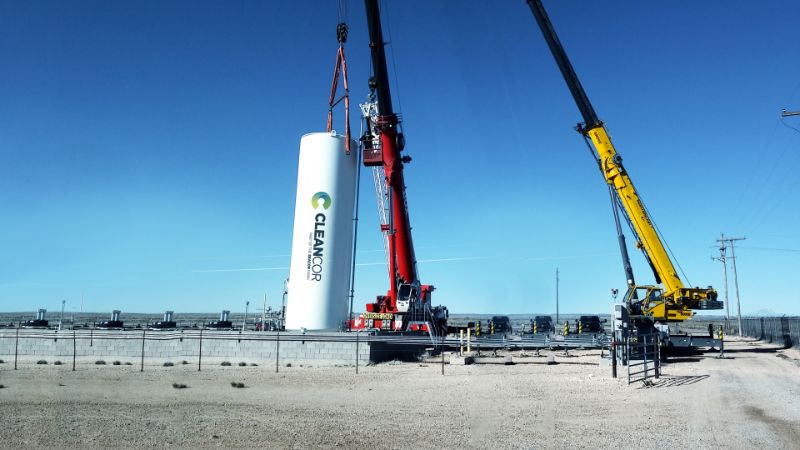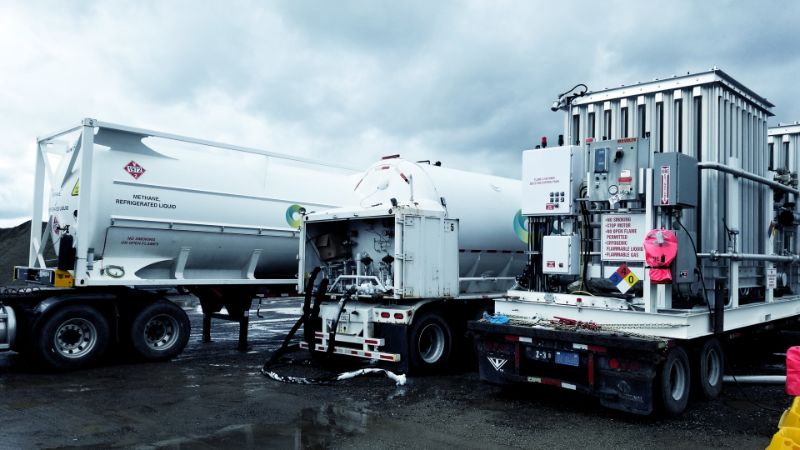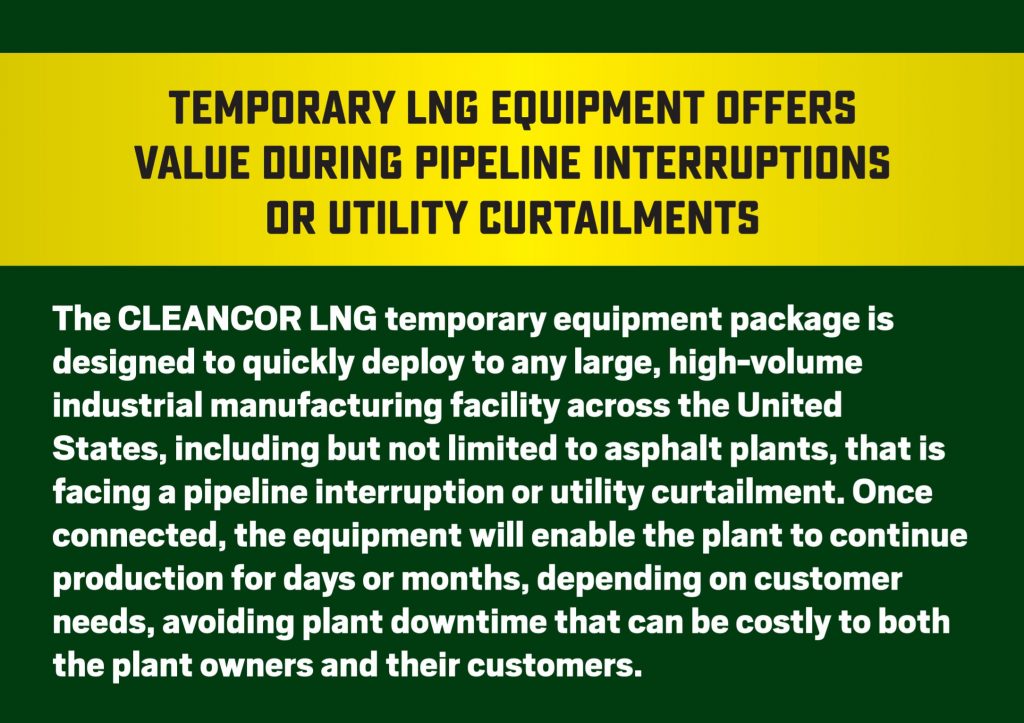Transition to Liquefied Natural Gas (LNG) at the HMA Plant
BY Scott Johns

Among the benefits asphalt producers see once they’ve switched to liquefied natural gas (LNG) to fuel their stationary and temporary asphalt production facilities is a simplified project bidding process. LNG can reduce the cost of asphalt production; is reported as safer than propane, diesel and other fuels commonly found in asphalt plants; can make meeting sustainability targets easier; and has more price stability than propane or diesel.
Producers who have worked with CLEANCOR LNG, which promotes the use of LNG in a variety of industrial segments, are also finding that the switch to LNG is very user-friendly for a number of reasons:
Any stationary or temporary asphalt production facility that is currently operating on propane, diesel, recycled fuel oil (RFO) or waste oil—including hot oil heaters and power generators—is a candidate to be fueled with LNG.
Fuel Efficiency Tips from the Association of Equipment Manufacturers
Equipment packages are designed for ease of use and maintenance.
Mobile LNG packages are designed to be easily transported from location to location and installed in a matter of hours, providing operators of portable asphalt plants with a flexible and highly-efficient fuel source.
CLEANCOR LNG, as part of its turnkey transition package, will work with asphalt producers and relevant air districts to complete the necessary changes to air permits before LNG transitions—either permanent or temporary—take place.

CLEANCOR’s mobile equipment packages are designed to let an asphalt plant temporarily operate on LNG while the plant is being permanently transitioned to LNG as its fuel source.
Site Evaluation
The first step in transitioning to LNG is a thorough evaluation of the site or sites involved.
If the producer is working with CLEANCOR LNG, then this information gathering will be conducted by a CLEANCOR LNG technical specialist and can be arranged even a few days before a transition is scheduled. It can be completed in approximately two hours per location.
The evaluation is designed to answer a variety of questions. Does the plant have a dual fuel gas train, if it is operating on diesel or waste fuel, or will one need to be installed? Are the burners already equipped to operate on natural gas or will a conversion be required? What is the best place to locate the storage tanks? How many tons of asphalt are produced in the plant in a calendar year? If a temporary plant is involved, how long will it be at its present location?
Permanent LNG Installation Process
The precursor to installing a permanent LNG package is putting in place the temporary mobile equipment. This enables the plant to operate on LNG while permitting is under way for civil work, including pouring slabs, and other tasks that are fundamental to a permanent installation. The temporary equipment will remain at the site until the permanent equipment is 100 percent tested and commissioned, allowing for a seamless transition.
Once the information-gathering and permitting paperwork are complete, all relevant government authorities have been notified, and a date and time have been determined when the transition to LNG will have little or no negative impact on the plant’s production, CLEANCOR LNG will begin installing its permanent equipment package. Generally, installations can be complete in two weeks and even sooner in some situations. In most cases, CLEANCOR LNG will supply all of the LNG storage and vaporization equipment, including telemetry systems or tank level monitoring systems, all safety systems and power generation equipment to run both large and small auxiliary equipment on location in the event grid power is unavailable, unreliable or costly based on the location.

Storage Tanks
The initial step in permanent installation is lifting the vertical or horizontal LNG storage equipment into place. This one- to two-day process is done by a local crane provider.
Once the storage tanks are in place and secured to the permanent slabs, the remainder of the first week is consumed with installing most of the hardware and safety systems, as well as vaporization/regasification systems, which enable the plant to operate at maximum production around the clock and can be connected to multiple points of combustion, such as hot oil heaters, primary asphalt burners and power generators.
Safety Training and Preventive Maintenance
During the second week, final connections are made, safety systems are tested and the storage tanks are readied for fuel. When the fuel is delivered, final commissioning is completed—typically over two days—and the permanent system is integrated into the plant, relegating the temporary mobile equipment package to a secondary fuel provider.
After the permanent equipment is commissioned, CLEANCOR LNG will provide safety and handling training to staff and management and develop a preventative maintenance schedule to ensure the long-time operation of the equipment.

Scott Johns
Scott Johns is president of CLEANCOR LNG. The company’s mission is to promote the use of liquefied natural gas (LNG) in a variety of industry segments. CLEANCOR LNG is a wholly-owned subsidiary of SEACOR Holdings Inc., (NYSE:CKH). For more information, contact him at sjohns@cleancorenergy.com.
